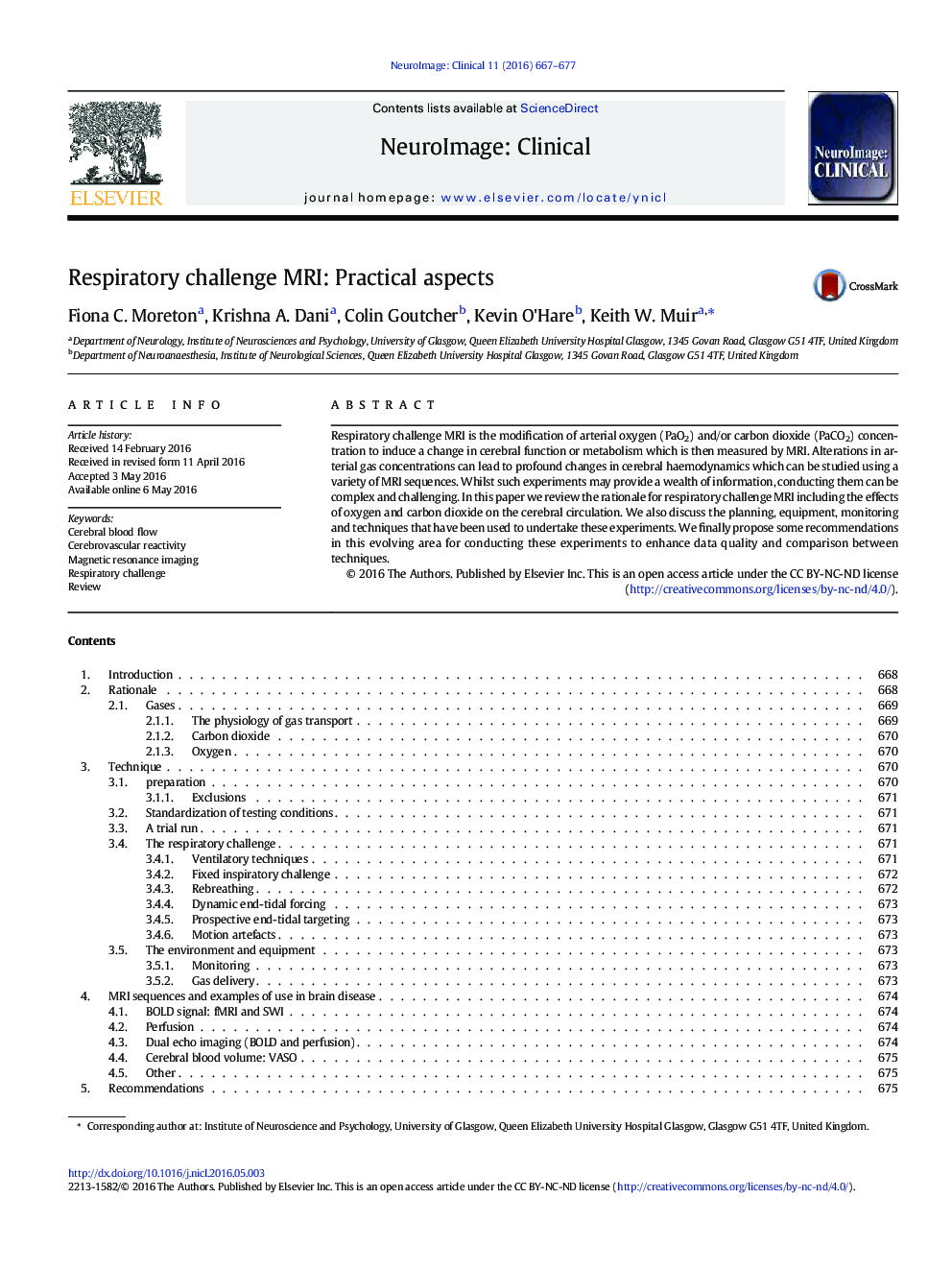| Article ID | Journal | Published Year | Pages | File Type |
|---|---|---|---|---|
| 3074957 | NeuroImage: Clinical | 2016 | 11 Pages |
•Oxygen and carbon dioxide affect cerebral blood flow and metabolism.•This can be imaged with various MRI sequences.•The practicalities of these techniques are reviewed.•Examples of how this has been used to understand disease mechanisms.
Respiratory challenge MRI is the modification of arterial oxygen (PaO2) and/or carbon dioxide (PaCO2) concentration to induce a change in cerebral function or metabolism which is then measured by MRI. Alterations in arterial gas concentrations can lead to profound changes in cerebral haemodynamics which can be studied using a variety of MRI sequences. Whilst such experiments may provide a wealth of information, conducting them can be complex and challenging. In this paper we review the rationale for respiratory challenge MRI including the effects of oxygen and carbon dioxide on the cerebral circulation. We also discuss the planning, equipment, monitoring and techniques that have been used to undertake these experiments. We finally propose some recommendations in this evolving area for conducting these experiments to enhance data quality and comparison between techniques.
